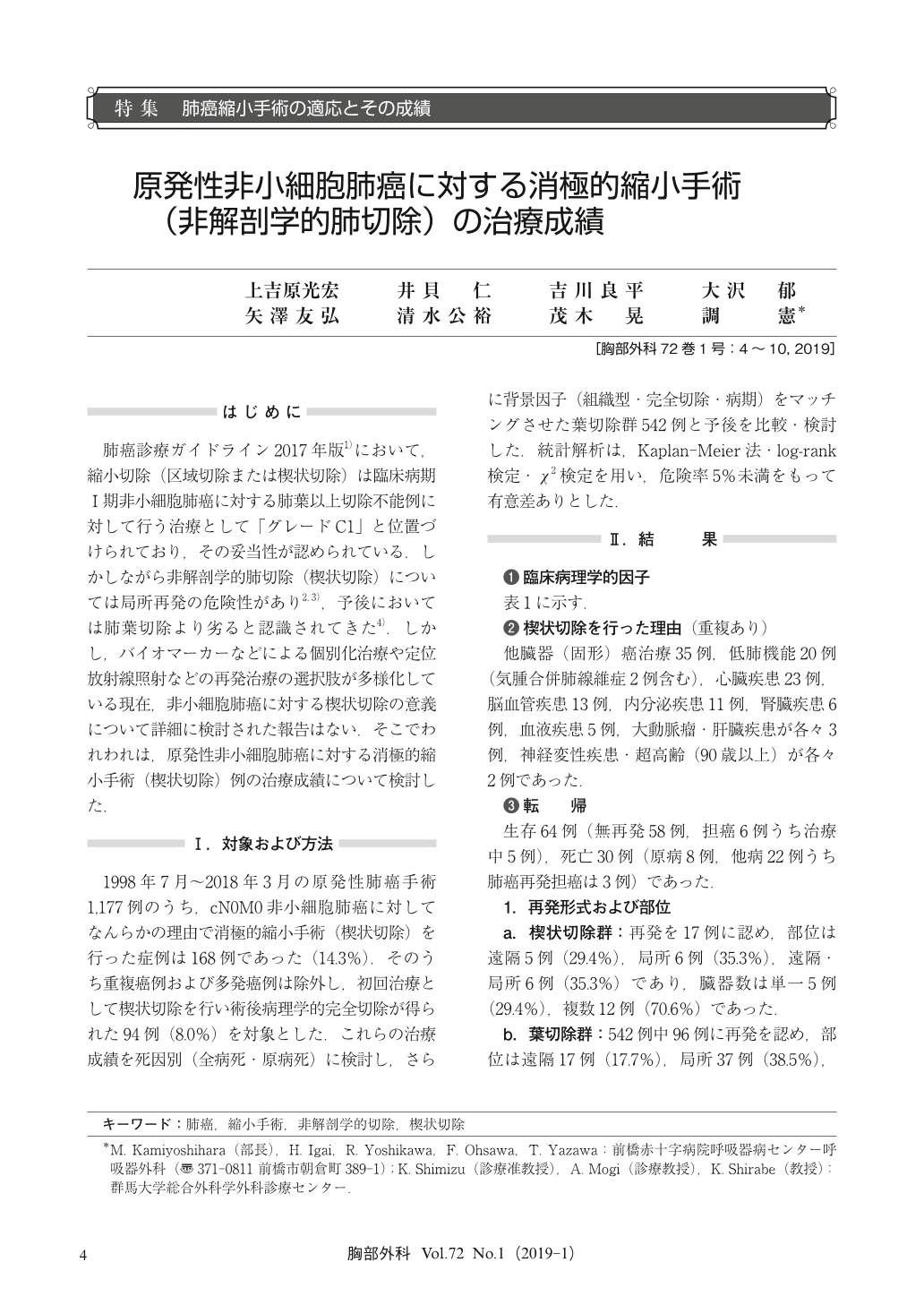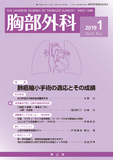Japanese
English
- 有料閲覧
- Abstract 文献概要
- 1ページ目 Look Inside
- 参考文献 Reference
肺癌診療ガイドライン2017年版1)において,縮小切除(区域切除または楔状切除)は臨床病期Ⅰ期非小細胞肺癌に対する肺葉以上切除不能例に対して行う治療として「グレードC1」と位置づけられており,その妥当性が認められている.しかしながら非解剖学的肺切除(楔状切除)については局所再発の危険性があり2,3),予後においては肺葉切除より劣ると認識されてきた4).しかし,バイオマーカーなどによる個別化治療や定位放射線照射などの再発治療の選択肢が多様化している現在,非小細胞肺癌に対する楔状切除の意義について詳細に検討された報告はない.そこでわれわれは,原発性非小細胞肺癌に対する消極的縮小手術(楔状切除)例の治療成績について検討した.
Background:We present wedge resection as an alternative procedure for primary pulmonary carcinoma in poor-risk patients.
Patients and Methods:We examined the overall survival of 94 patients who underwent wedge resection for pN0M0 primary pulmonary carcinoma over the last 20 years because of their intolerance of lobectomy.
Results:In the wedge resection group, the postoperative 5-year survival in all causes of death was 59.6%, indicating significantly better prognoses in patients with adenocarcinoma aged less than 75 years old. The 5-year survival in the lobectomy group was 77.5%, while the 5-year survival in terms of primary causes of death in the wedge resection and lobectomy groups was 89.3% and 88.0%, respectively. There was a significant difference between wedge resection and lobectomy in all causes of death, but not between groups in primary causes of death.
Conclusion:Because there were many non-primary deaths in the wedge resection group, care should be taken to follow comorbidities that cause limited lung resection. Survival in the wedge resection group was not inferior to that in the lobectomy group in analyses of the primary causes of death. We suggest that wedge resection should be a favorable procedure for primary pulmonary carcinoma in poor-risk patients to obtain a large enough sample volume of tumor cells.

© Nankodo Co., Ltd., 2019


